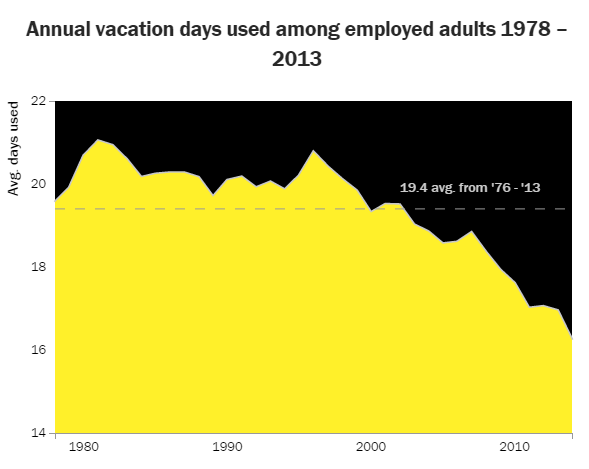
by Fronetics | Jul 8, 2015 | Blog, Content Marketing, Marketing, Social Media

By creating and distributing valuable and relevant content in a strategic and consistent manner you create demand for your products and services and drive profitable customer action. That being said, while content is king, content doesn’t go far (actually it goes nowhere) without distribution. For content to be successful for your business you need to do more than create content – you need to distribute content. Moreover, the content needs to be delivered consistently over time, at the right time, and in the right place.
Wise words by BuzzFeed’s Jonathan Perelman: “Content is king, but distribution is queen and she wears the pants.”
So how often should you distribute content via social media? While it is important to find the balance that is right for your business, here is what we have found to be effective and what we recommend:
12 to18 per day
Twitter
Business users should aim to tweet 12 to 18 times per day, not including replies and retweets. Twitter is likely the only social media network where it’s acceptable to push content out to followers with heavy frequency, but Twitter doesn’t filter users news feeds in the same way that Facebook does, so the lifespan of a tweet is only around 15 minutes. To get the most out of your content, try repurposing or repackaging it and publishing it multiple times a day. This strategy ensures your content goes farther and gains more exposure. Use social tools like HubSpot or Sprout Social to schedule posts at different times throughout the day as publishing content ahead of time frees up your time to respond and engage with users in real time.
1 time per day
Facebook
Companies generally find that posting 1 time per day is their sweet spot for most social media networks. Facebook’s algorithm determines what content is shown to each user, so it’s likely that your followers won’t see everything your business posts. Ensuring that your Facebook posts offer high quality content will work heavily in your favor as users who engage with your content are likely to see your posts with greater frequency. And your content lasts longer on Facebook; according to wisemetrics, a Facebook post reaches 75% of its potential engagement in 5 hours. A median tweet reaches this 75% mark in less than 3hrs. Be cognizant though of posting too frequently on this network; Social Bakers reviewed the Facebook posting habits of several large brands and found a correlation between increased posts (defined as more than 3 per day) and the loss of page likes.
Instagram
As with Facebook, businesses posting to Instagram should aim to publish content once per day. The caveat with Instagram is that posts shouldn’t exceed more than one per day. Unlike other wordy social networks like Facebook and Twitter, Instagram is the place for your company to convey its brand with images. A recent study by Forrester found that Instagram users were 58 times more likely to like, comment, or share a brand’s post than Facebook users and 120 times more likely than Twitter users. With more than 300 million active users, businesses that have found a way to leverage Instagram are boosting brand engagement and growing its customer base at an incredible rate, most with only one post per day.
LinkedIn
Because office workers not only take a break from their offices on weekends, but also from LinkedIn, companies should aim to post content once per day during the workweek. In fact, in a guide published by the social network itself, ideal posting frequency for businesses is 20 times per month. Beyond posts published by your company once per day, individual users from your business should be encouraged to engage frequently with peers in activities such as asking and answering questions with LinkedIn’s Group feature. To provide the most value for your LinkedIn followers, content should be less promotional, and more heavily focused on industry-wide trends and insight.
Google+
Companies tend to find that for Google+, once per day postings generate the most value. With the social network’s obvious search engine connection, user engagement on Google+ might not be as high as say, Twitter or LinkedIn, but there are anecdotal reports that maintaining active company profiles allows content to be indexed quicker on Google. Research shows five times as many people read a Google+ headline rather than the actual content, so spend some time crafting great headlines that succulently convey your company’s message.
At the end of the day, optimal posting frequency for your company rests heavily on the type of audience it wants to reach; experiment with different posting frequencies and let your own analysis be your guide. There’s a fine line between annoying your social followers and providing value. Maintaining a dynamic and fluid posting strategy will ensure that your social efforts drive followers to action, rather than drive them away.
Fronetics Strategic Advisors is a leading management consulting firm. Our firm works with companies to identify and execute strategies for growth and value creation.
Whether it is a wholesale food distributor seeking guidance on how to define and execute corporate strategy; a telematics firm needing high quality content on a consistent basis; a real estate firm looking for a marketing partner; or a supply chain firm in need of interim management, our clients rely on Fronetics to help them navigate through critical junctures, meet their toughest challenges, and take advantage of opportunities. We deliver high-impact results.
We advise and work with companies on their most critical issues and opportunities: strategy, marketing, organization, talent acquisition, performance management, and M&A support.
We have deep expertise and a proven track record in a broad range of industries including: supply chain, real estate, software, and logistics.


by Fronetics | Jul 7, 2015 | Blog, Marketing, Social Media, Strategy
With LinkedIn claiming the top spot for social networking professionals, there’s a good chance you already access the social network regularly. But what you might be missing on LinkedIn could be the key to unlocking more business opportunities.
Allow me to explain. There’s been a lot of talk about the impact social media is having on business sales. And for good reason – last year, the total amount of sales that could be tracked to social networks hit $3.30 billion, up 26% from 2013’s $2.62 billion. A growing number of companies are realizing there’s more opportunity than ever to use social platforms as lead generation and prospecting tools. When it comes to LinkedIn, reports suggest that users who command a deeper understanding of the social network’s capabilities reap far greater benefits than those that still view LinkedIn primarily as a job search tool.
One of LinkedIn’s best features for driving new business leads and opportunities is LinkedIn Groups. LinkedIn describes their Group feature as a “place for professionals in the same industry or with similar interests to share content, find answers, post and view jobs, make business contacts, and establish themselves as industry experts.” Essentially, it’s an online community where you can connect with industry peers and like-minded professionals (read: prospects and leads).
Never tried Groups before? Here’s a quick guide to get you up and running so you can start prospecting and finding leads today. As a prerequisite, you should already have an active LinkedIn account. If you don’t, start here.
Find Groups
To start, let’s take Groups out for a spin. From the homepage, navigate to the search bar at the top and click on the tab directly to the left on it. Drag down to “Groups”, then, type in a subject you’re interested in (e.g., marketing, sales, baking, etc.). You might notice that when you do a search, LinkedIn also provides suggestions not only on “Groups” but in several other categories such as “Connections,” “Companies,” “Features” and “Skills.” Once you’ve used your keyword to narrow your search, find a group that best matches what you’re looking for.
Cast a Wide Net
Once you’ve selected your group, join it. You may have to request membership approval if it is a private group. While there’s no limit to the amount of groups you can join, the sweet spot for lead generation is to join groups that are outside your industry or function that might help you grow your business. If you’re a small (and growing) 3PL, for example, don’t just industry groups, expand your network by joining groups for entrepreneurs and small business owners.
Commit to Building Your Network
Set aside some time each week to connect with five current or former business colleagues. LinkedIn makes it easy by providing suggestions based on your current connections and places of employment. More connections equal more opportunities for discussion about your company’s products and services.
Answer like a Pro
Use the Answers section within your groups as a place to showcase your expertise. Set a goal to answer at least two questions per week. After actively participating in a group for at least two weeks, start your own discussion within the group. Engaging industry peers in a rich dialogue is a great way to build trust and confidence among members of your new group. Turning your question and answering activity into leads is a long-term strategy, but one that can prove successful as people will begin to look at you as an expert and leader in your industry.
Practice Consistency
The key to generating leads via LinkedIn is consistency. Steady participation in your groups is the secret is to building relationships that will pay off in the end. Take some time to determine what’s working in your strategy and refocus your efforts as necessary, but always, always be consistent in your participation. In the end, it’s your activity that is going to set you apart from the competition and establish your expertise.
In a recent survey of sales professionals, most reported they were unfamiliar with LinkedIn’s full capabilities, but in the same survey, a little more than a third of respondents reported generating new business opportunities and revenue gains from their use of LinkedIn. It’s clear that the social network holds opportunity for those that recognize – and leverage – the network’s full capabilities.
Fronetics Strategic Advisors is a leading management consulting firm. Our firm works with companies to identify and execute strategies for growth and value creation.
Whether it is a wholesale food distributor seeking guidance on how to define and execute corporate strategy; a telematics firm needing high quality content on a consistent basis; a real estate firm looking for a marketing partner; or a supply chain firm in need of interim management, our clients rely on Fronetics to help them navigate through critical junctures, meet their toughest challenges, and take advantage of opportunities. We deliver high-impact results.
We advise and work with companies on their most critical issues and opportunities: strategy, marketing, organization, talent acquisition, performance management, and M&A support.
We have deep expertise and a proven track record in a broad range of industries including: supply chain, real estate, software, and logistics.


by Fronetics | Jul 6, 2015 | Big Data, Blog, Data/Analytics, Internet of Things, Logistics, Marketing, Strategy, Supply Chain

The battle for competitiveness in the cloud.
In this age of radical transformation for supply chains, top companies are tying together prevailing concepts, like big data and the Internet of Things (IoT), with cloud-based computing. Supply chains are being reimagined as digital networks that track not only physical goods, but also people, data, and money. As such, global technology giants continue to invest heavily in cloud computing.
The Chinese e-commerce company Alibaba Group Holding, Ltd. recently announced that it is launching its first international venture – a cloud computing hub in Silicon Valley, proving the fierce competition for market share is stiffening both globally and on the home turf. Notably, all five top-ranked companies listed by the 2013 Strategy & Global Information, Communications and Technology 50 study bet their future on cloud technologies. The companies (IBM, Microsoft, SAP, Oracle, and Cisco Systems) could not, until recently, be perceived as direct competitors, and now they all wield cloud-based portfolios as their competitive weapon of choice.
Analysts note:
The industry leaders are seeking dominant positions, wanting to become the kings of the cloud. As a group, they are putting distance between themselves and the second tier of followers.
For further proof data analytics is driving competition for cloud customers, we can look to a new report by Market & Research that shows data analytics and cloud computing are expected to record a combined growth of 26% annually over the next five years. The implication is that demand is hardly going to lessen as an increasing number of organizations need cloud solutions to manage and store the huge amounts of data that they use to transform manufacturing processes, fine-tune supply chains, forecast customer behavior, and optimize inventories – to name a fraction of potential applications.
And cloud-based computing is even moving the needle of interest in industries that seem inherently averse to making data and information more easily accessible. For example, concerns about data encryption, auditing controls, and transparency have stymied the adoption of cloud-based computing in the financial industry. According to a report by the Cloud Security Alliance, only 28% of American financial institutions have a cloud-based strategy in place, but as a sponsor of the report, Dr. Chenxi Wang, vice president of Cloud Security and Strategy at CipherCloud points out:
Cloud has made solid inroads in this industry with many firms looking to harnessing the power of cloud. There’s plenty of room for growth, particularly for providers who can fill the void for the auditing and data protection controls that are at the top of respondents’ cloud wish list.
Meanwhile, the public cloud services market alone could grow into a $100 billion industry by 2017, according to researcher IDC. Is your business prepared to leverage cloud computing for its supply chain activities? It’s coming, ready or not.
Fronetics Strategic Advisors is a leading management consulting firm. Our firm works with companies to identify and execute strategies for growth and value creation.
Whether it is a wholesale food distributor seeking guidance on how to define and execute corporate strategy; a telematics firm needing high quality content on a consistent basis; a real estate firm looking for a marketing partner; or a supply chain firm in need of interim management, our clients rely on Fronetics to help them navigate through critical junctures, meet their toughest challenges, and take advantage of opportunities. We deliver high-impact results.
We advise and work with companies on their most critical issues and opportunities: strategy, marketing, organization, talent acquisition, performance management, and M&A support.
We have deep expertise and a proven track record in a broad range of industries including: supply chain, real estate, software, and logistics.


by Fronetics | Jul 3, 2015 | Blog, Leadership, Strategy, Talent

In 1983, the year that Chevy Chase loaded his movie family into the Griswold’s station wagon in National Lampoon’s Vacation, Americans took an average of 20 vacation days. Now, the youngest member of the Griswold family is back on the big screen in 2015, this time taking his own family on a vacation. If Americans’ recent use of paid time off is any indication, reports suggest he’ll see a more open road than his father. Plummeting to an average of 16 vacation days in 2013, the time that Americans spend away from work has fallen precipitously over the past decade. And neither workers nor employers are benefiting from this marked decline.

Source: Project Time Off, Oxford Economics, 2014
You Need a Vacation
Occasionally escaping daily routine is central to both the physical and mental health of employees, and taking time off has been proven to boost work performance and productivity. A 2011 Harvard Medical School study found that sleep deprivation costs American companies $63.2 billion a year in lost productivity. Ernst & Young conducted an internal study of its employees in 2006 and found that for each additional 10 hours of vacation employees took, their year-end performance ratings from supervisors (on a scale of one to five) improved by 8%. What’s more, retention rates were significantly higher among vacationers.
Wish You Were(n’t) Here
Given that the Center for Economic Policy and Research reports that the United States is the only advanced economy in the world that does not guarantee its employees paid time off, it’s unlikely the use of vacation days will increase without some type of policy reform. With American employers not legally required to give workers either paid vacation time or paid holidays, a high number – 77% of private sector companies offer paid time off and paid holidays as part of employee compensation packages. Not surprisingly, though, as employee wage increases, so does the likelihood that they will receive time off; half of low-wage workers typically receive paid time off whereas more than 90% of high-wage workers receive paid time off.
Unplug and Unwind
Harris Interactive reports that people like the idea of more time off. Specifically, 50% of workers who receive paid vacation time in the top 10 cities in the US say they would be willing to sacrifice a workplace benefit for more paid time off. Ironically, although employees say they want more time off, 57% don’t take off the time they already receive. Each year there are 175 million vacation days which American workers are entitled to which are not taken. Even when employees actually do use their time off, they don’t spend the time unplugged. 47% of respondents in a recent survey by Pertino reported that they feel less stressed on vacation if they can stay connected to the office. The same study found that 59% of Americans regularly work, check email, take a phone call, and do other work related tasks while on vacation. But, aside from increased productivity upon their return, employers have another incentive to encourage employees to unplug while away. The Pertino survey found that 77% of those who work on their vacation do not have access to their office network. Because of this, employees use unsanctioned or unsecured cloud services (32%) and/or bring their work computers and files with them on vacation (35%). Public Wi-Fi hotspots are commonly used by vacationers, creating an opportunity for company data and/or log-in credentials to be stolen.
While there are certainly many factors at play in the 2013 job satisfaction study published by the non-profit research group Conference Board, it’s worth noting that back in 1987, when the average American worker took 20 days of vacation, job satisfaction stood at over 61%. Now that Americans have cut back on days away from the office, job satisfaction hovers slightly above 50%. There’s no definite way to tell if Americans could move the needle of job satisfaction by loading up their cars and hitting the open road, but it’s a good start. Let’s start making vacations work for us.
Fronetics Strategic Advisors is a leading management consulting firm. Our firm works with companies to identify and execute strategies for growth and value creation.
Whether it is a wholesale food distributor seeking guidance on how to define and execute corporate strategy; a telematics firm needing high quality content on a consistent basis; a real estate firm looking for a marketing partner; or a supply chain firm in need of interim management, our clients rely on Fronetics to help them navigate through critical junctures, meet their toughest challenges, and take advantage of opportunities. We deliver high-impact results.
We advise and work with companies on their most critical issues and opportunities: strategy, marketing, organization, talent acquisition, performance management, and M&A support.
We have deep expertise and a proven track record in a broad range of industries including: supply chain, real estate, software, and logistics.


by Fronetics | Jul 2, 2015 | Blog, Leadership, Strategy
 “You’re fired!” What you need to know about firing a client
“You’re fired!” What you need to know about firing a client
In the early stages most independent contractors and businesses encounter a learning curve when it comes to client procurement and business practices. They may need to find their footing in terms of understanding their own interests and strengths. Over time they start to understand what kind of clients mesh with their expertise, interests, temperament, ethical practices, and work style.
Perhaps you’ve heard some say, “I/we don’t take on new clients.” Don’t new clients bring in more work, more connections, more money? At some point in a person’s career or a business’s lifespan, there is a shift that occurs from needing and seeking clients to needing and seeking better clients. Perhaps at some point the seeking part leaves the equation, and the contractor or company is the one being sought by clients. And, perhaps, a business doesn’t need to take on new clients because they’ve found a sweet spot with their current clients.
In order to reach this enviable equilibrium with clients, sometimes certain clients need to go. Consultant Dorie Clark, who authored the Harvard Business Review article, A Consultant’s Guide to Firing a Client, shares, “I’ve been a consultant for the past nine years, and my client list today looks dramatically different than it did when I launched, in large part because of strategic decisions I made to let some clients go and take on others.”
The thought of firing clients makes some people shudder. It can feel like a risk. In many ways it is a risk, but the payoff can be great. It’s advantageous to take stock of the clients you’re currently working with. Are there clients who are temperamental or disrespectful, who drain time or money from your business, who require skills or services you’re not interested in providing, who aren’t willing to pay what you’re worth, who you’ve been working with as a favor (such as legacy clients)? In order to make room for new clients, who align with your skills and practices and pay what you’re worth, some old clients may need to go. In order to lighten your load, if you’re looking to become more lean, selective, or focused, some old clients may need to go.
Another anxiety around letting clients go is the conflict that could arise. The best way to fire a client is to do it in a respectful manner, remembering that your integrity and reputation are both on the line. Even if you’re dealing with an abusive client, take the high road. The Forbes article Four Reasons to Fire a Client also encourages this approach, “Remember to remain neutral, avoiding accusation, and whenever possible give your customer a referral to another provider.”
Here are 5 tips for successful culling of clients:
1. Do it in writing. Cover potential legal encounters. This is especially useful when citing the client’s breach of contract or working with a disrespectful or petulant client.
2. Be formal. Even if your relationship has felt informal at times, use professional language.
3. Be concise and clear. There is no reason to bring emotions into the mix and no reason to be ambiguous. Briefly state why the termination is occurring and when it will take place (e.g. on X date, by the end of the contract, immediately, etc.) This should be an air-tight document.
4. Be grateful. There’s no need to gush, but even if the relationship has been challenging, express an understanding that clients are the backbone of a business. A simple line like, “we’ve appreciated the opportunity to work with you…” will secure your integrity. After all, it’s not a lie. Most likely you did appreciate the opportunity, but opportunity and experience are two different things.
5. Be helpful. Don’t leave a client stranded. As previously mentioned, if possible, refer your client to another business. This leaves you in good standing with the client and also fosters connections with other businesses.
At the end of the day, how you handle firing a client could impact the relationships with current and potential clients, as well as your own employees. In a society in which transparency and information are demanded and more available, you want to be sure to end this relationship respectfully. Don’t be the one people are gossiping about, be the one people want to work with.
Fronetics Strategic Advisors is a leading management consulting firm. Our firm works with companies to identify and execute strategies for growth and value creation.
Whether it is a wholesale food distributor seeking guidance on how to define and execute corporate strategy; a telematics firm needing high quality content on a consistent basis; a real estate firm looking for a marketing partner; or a supply chain firm in need of interim management, our clients rely on Fronetics to help them navigate through critical junctures, meet their toughest challenges, and take advantage of opportunities. We deliver high-impact results.
We advise and work with companies on their most critical issues and opportunities: strategy, marketing, organization, talent acquisition, performance management, and M&A support.
We have deep expertise and a proven track record in a broad range of industries including: supply chain, real estate, software, and logistics.










